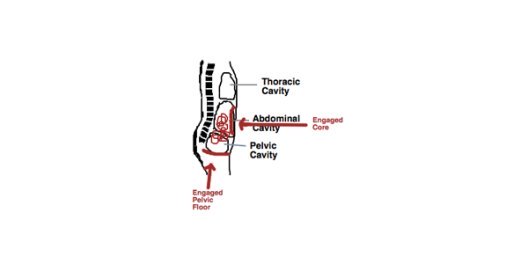Intra Abdominal pressure: Good or Bad?

Is Intra Abdominal pressure good or bad?
The common thought being; intra-abdominal pressure (IAP) is not good for you... therefore any support worn around the belly must be harmful...assuming it increases IAP, meaning it must put pressure on pelvic floor, causing prolapse, hemorrhoids, displacement of organs and diastasis. Agh..pressure sounds terrible and makes sense right? Pressure causes problems? And while I agree pressure can cause problems, it can also be very helpful.
Picture a flat bike tire. Without the proper amount of air pressure, the tube walls are flimsy and weak.

Now look at a bike tire filled. The air pressure is contained and increased, the bike works. Tube walls are also strong and stable to handle the pressure.

If muscles can sustain and stiffen through the entire movement without fatiquing, it will be ablet to resist the internal force. Resisting is what helps create a strong stabilizied foundation to transfer force.
So is IAP good or bad?
It depends on your breathing
It depends on your muscles ability (strength) to contain the pressure
It depends on where the pressure is going
It depends on what is causing the IAP
If you put on a support and it restricts your breathing, then it is too tight.
We all want the simple answers, yet there are many variables that create a healthy or unhealthy pressure environment.
FIRST ... we need to recognize that there are different ways a person can engage their core. This can influence how pressure is distributed. This can affects whether IAP stays more in the abdominal cavity or pelvic cavity.
SECOND .. when a person engages their core, IAP does increase slightly. When a person lifts a heavy weight and engages the core more, IAP increases even more.
Does that mean engaging the core is bad for you? Well we know that isn't true. The core needs to engage/brace to provide a somewhat stiff foundation for lifting and transfereing force.
The key is getting the muscles to respond appropriately to the pressure.
The questions we should be asking is:
1. What is causing the IAP?
2. Where is the IAP going when a person engages their core (abdominal, thoracic or pelvic cavity?)
3. Are the core muscles able to stiffen to resist the internal force?
4. Is the pelvic floor able to coordinate with the abdominal muscles?
5. How is the person engaging their core?
6. What kind of breathing mechanics are they doing?
This is what determines whether IAP is helpful or damaging! Increasing IAP is what helps a person lift more and produce more power!
Even if pressure is put on the pelvic floor..the pelvic floor muscles when functioning well (strength, coordination and endurance) will be able to withstand the pressure.
When the INNER CORE system (diaphragm, transverse abdominals, pelvic floor and multifidus) is reactive, the pelvic floor can lift to resist pressure. This stiffening protects the pelvic floor and helps contain pressure in the abdominal cavity and off the pelvic floor.
PRACTICE BRACING/ENGAGING: Lift pelvic floor, breathe out as you engage abs. Where does the pressure go? Up in the Abdominal Cavity off the pelvic floor. (If you are having trouble figuring out how to do this, you need to reconditioning your core)

| Copyright 2015 ReCORE Fitness, All Rights Reserved |
If the pelvic floor is not responding (lifting) when the TVA engages (see pic below), then IAP may get pushed downward and put more pressure on the pelvic floor (like when a person has a bowel movement). This is what contributes to peeing when lifting heavy weights.
FEEL THE DIFFERENCE #1: Breathe out while engage abs in and "bear down" (like having a bowel movement) - where does the pressure go? Yes, down to the pelvic floor.
FEEL THE DIFFERENCE #2: Hold breath, "bear down" without engaging the abs (belly bulges out instead). Where does the pressure go? Yes, down to the pelvic floor and out to the belly button.

| Copyright 2015 ReCORE Fitness LLC, All Rights Reserved |
Yes ladies, peeing when doing CrossFIT or lifting heavy weights is not ideal but will happen when muscles reach their threshold or fatique. Some may only experinece it on a 1 rep max. This meas that the pelvic floor is not able to sustain the pressure like it should and pressure on the bladder is too much.
SOURCES





















We, Jaime and Sheeva, are fertility specialists who work and live in New York City. For a full run-down of education and articles written, click here. Our practice is devoted to helping women achieve their goal of parenthood. Using a team approach (two minds are always better than one) rooted in honesty and transparency, we are... Read More